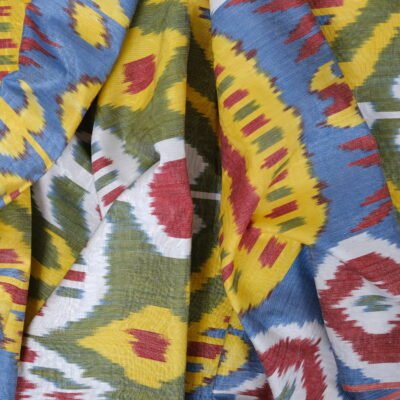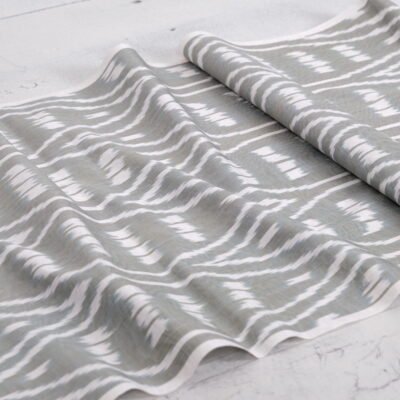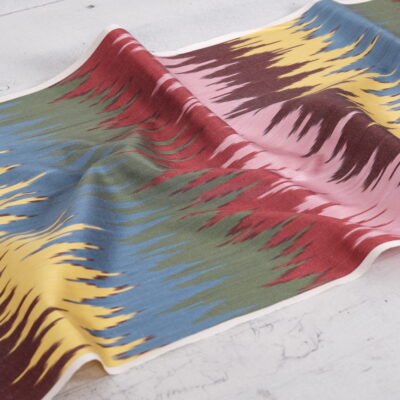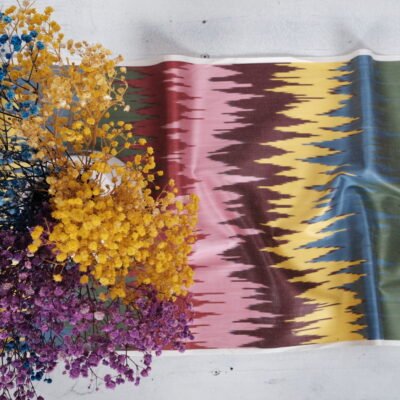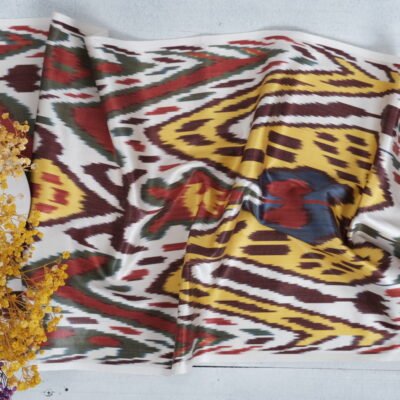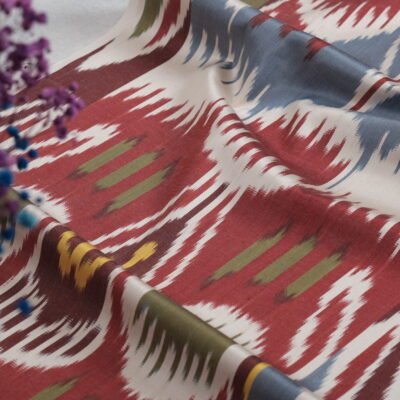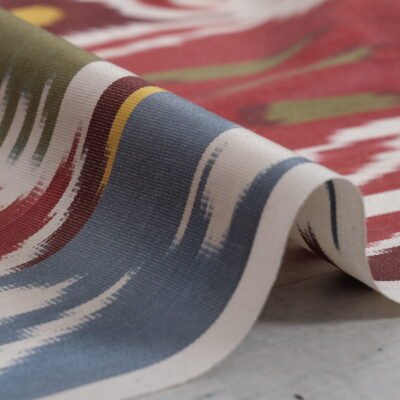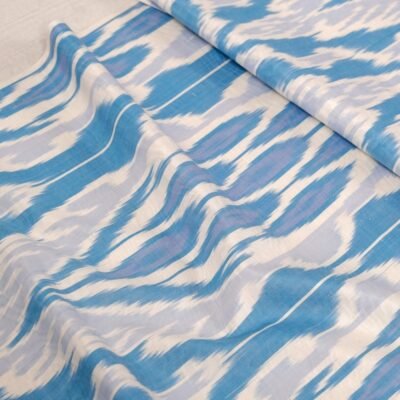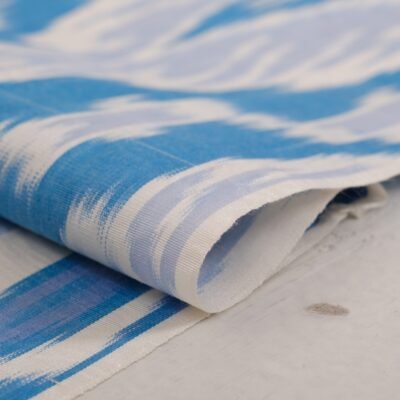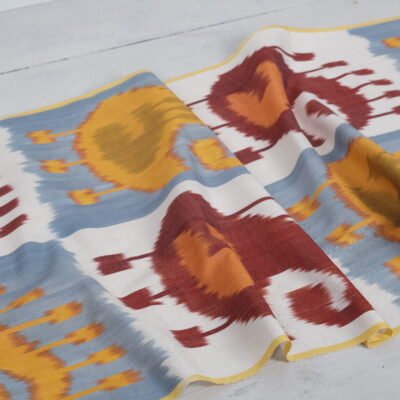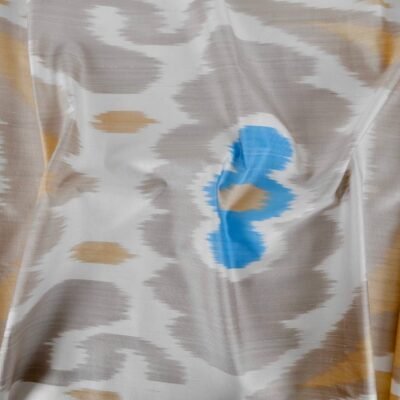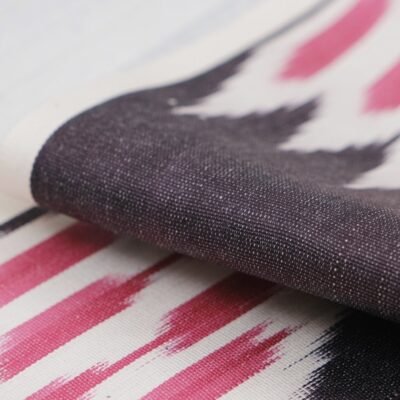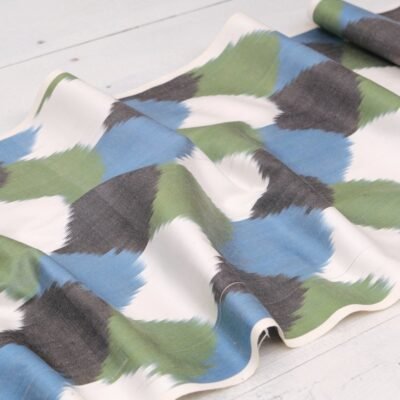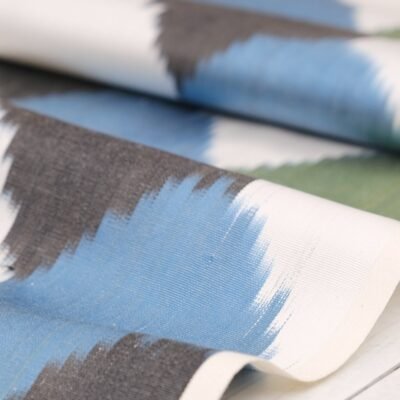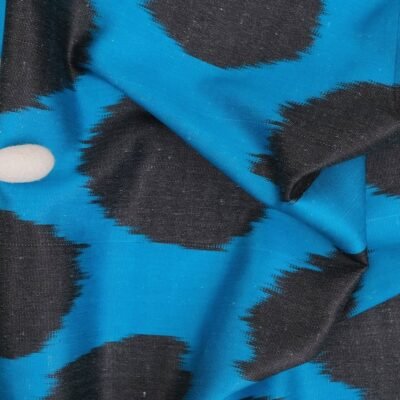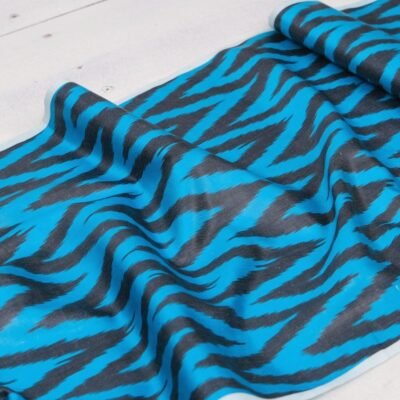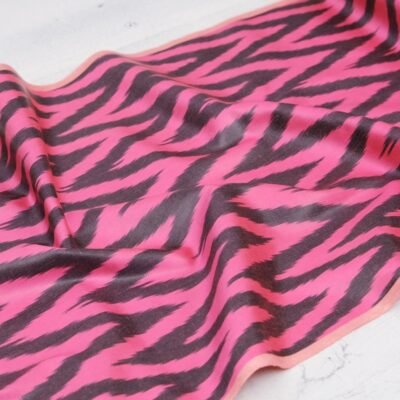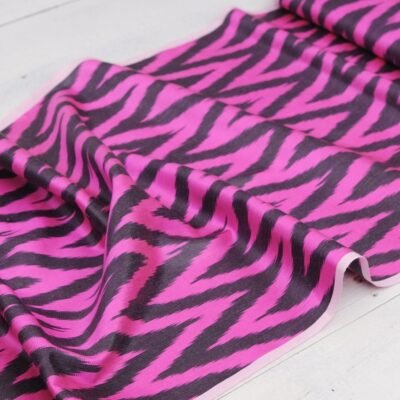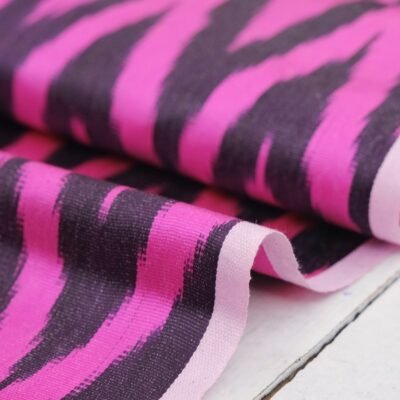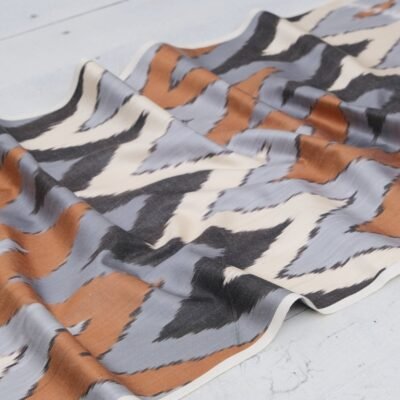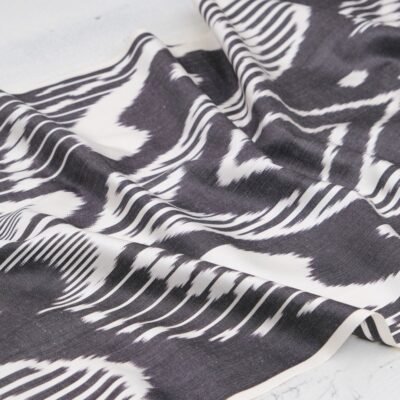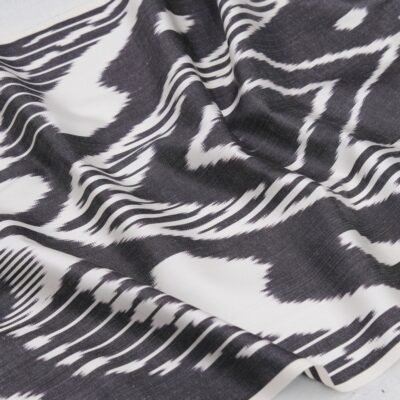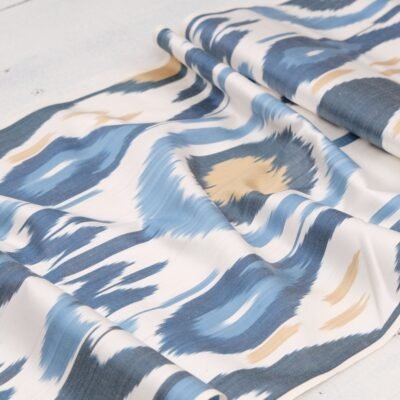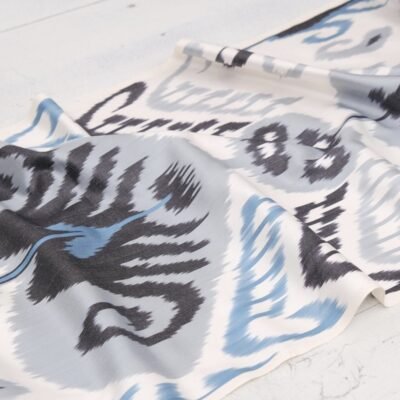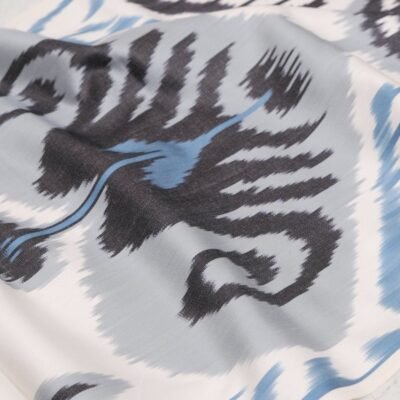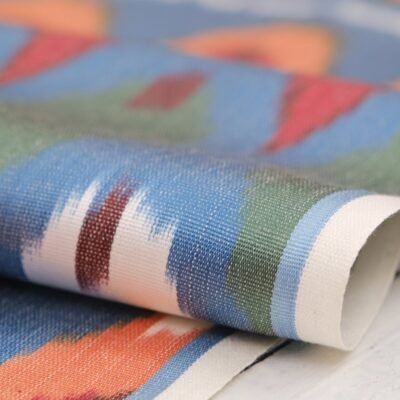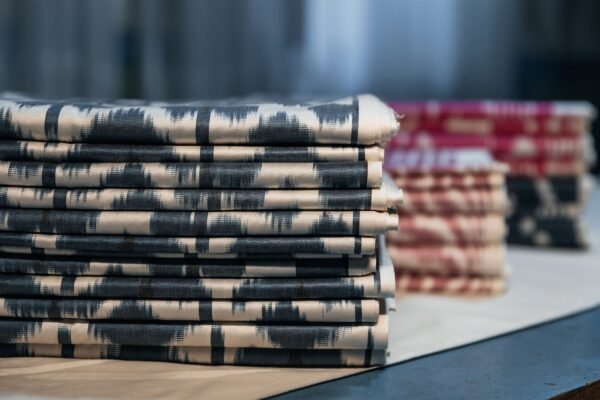Natural Dyes: Unraveling the Colors of Nature
One of the fascinating aspects of ikat fabrics is the use of natural dyes. Traditionally, artisans would extract colors from natural sources such as plants, minerals, and even insects. These natural dyes not only provide a wide range of hues but also offer a sustainable and eco-friendly alternative to synthetic dyes. Let's explore some of the natural dyes commonly used in ikat fabrics:
Indigo: The Blue Magic
Indigo is perhaps one of the most iconic natural dyes used in textiles. Extracted from the leaves of the indigo plant, it has been prized for centuries for its rich blue color. In the world of ikat, indigo is often used to create striking patterns and designs. The process of dyeing with indigo involves fermentation and oxidation, resulting in a unique depth of color that is both timeless and captivating.
Madder Root: A Touch of Red
Madder root is another popular natural dye used in ikat fabrics. This dye is extracted from the roots of the madder plant and produces shades of red, ranging from soft pinks to deep maroons. The process of dyeing with madder root involves extracting the dye from the roots, fermenting it, and then applying it to the yarns. The result is a warm and earthy red color that adds a touch of vibrancy to any textile.
Turmeric: The Golden Glow
Turmeric, a spice commonly found in many kitchens, also holds a place in the world of natural dyes. Its vibrant yellow color can be extracted by boiling the turmeric roots and then soaking the yarns in the resulting liquid. The dyeing process with turmeric often requires multiple dips to achieve the desired intensity of color. The golden hues created by turmeric add a radiant glow to ikat fabrics.
Other Natural Dyes
In addition to indigo, madder root, and turmeric, there are numerous other natural dyes used in ikat fabrics. These include cochineal, derived from insects, which produces shades of red and pink; weld, a yellow dye extracted from the weld plant; and logwood, a dark purple dye obtained from the heartwood of trees. Each natural dye brings its unique character to the world of ikat, resulting in a kaleidoscope of colors.
Different Techniques, Different Colors
The colors in ikat fabrics are not only derived from natural dyes but also influenced by the specific techniques used in the weaving process. Two primary techniques used in ikat weaving are warp ikat and weft ikat. Let's explore how these techniques contribute to the colors and patterns in ikat fabrics.
Warp Ikat: Building Colors with Precision
Warp ikat involves dyeing the warp yarns before they are set on the loom for weaving. This technique allows the weaver to create intricate patterns and precise color placements. By carefully aligning the dyed warp yarns during the weaving process, the patterns emerge with precision and clarity. The warp ikat technique is known for its bold and defined designs, where each color is meticulously planned and executed.
Weft Ikat: Creating Harmonious Blends
Weft ikat, on the other hand, involves dyeing the weft yarns before they are woven into the fabric. This technique allows for more spontaneous and fluid color placements. The weaver can blend different hues within the weft yarns, creating a sense of movement and harmony in the final design. Weft ikat fabrics often exhibit a softer and more blended appearance, with colors seamlessly merging into one another.
The Magic of Patterns: Exploring Design Motifs
Patterns play a crucial role in ikat fabrics, adding depth and character to the textiles. The motifs and designs in ikat fabrics vary across different cultures and regions, each telling a unique story. Let's explore some of the popular design motifs found in ikat fabrics:
Geometric Patterns: Symmetry and Precision
Geometric patterns are a hallmark of ikat fabrics. From intricate diamonds and squares to repetitive triangles and chevrons, these patterns showcase the weaver's skill in creating symmetrical and precise designs. Geometric motifs often create a sense of order and balance in the fabric, adding a touch of sophistication to the overall composition.
Floral Motifs: Nature's Inspiration
Floral motifs are another common theme in ikat fabrics. Inspired by the beauty of nature, these designs often feature delicate flowers, vines, and leaves. The intricacy and fine details of floral motifs require careful dyeing and weaving techniques to achieve the desired effect. Floral patterns bring a sense of elegance and grace to ikat fabrics, evoking a connection with the natural world.
Abstract Designs: Unleashing Creativity
Abstract designs in ikat fabrics allow the weaver to unleash their creativity and imagination. These designs often feature bold shapes, asymmetrical compositions, and unconventional color combinations. Abstract motifs offer a contemporary and artistic twist to traditional ikat fabrics, making them a popular choice for those seeking a unique and avant-garde aesthetic.
Celebrating Diversity: Ikat Fabrics from Around the World
Ikat fabrics are not limited to a specific region or culture. They have been created and cherished in various parts of the world, each with its distinct style and color palette. Let's take a journey around the globe to explore the diverse ikat traditions:
Indonesian Ikat:
Indonesia is renowned for its vibrant ikat textiles. From the intricate "songket" fabrics of Sumatra to the bold "tenun ikat" of Flores, Indonesian ikat showcases a rich tapestry of colors and patterns. The use of natural dyes and traditional weaving techniques has been passed down through generations, preserving the authenticity and beauty of these textiles.
Indian Ikat:
India has a long-standing tradition of ikat weaving, with regions like Odisha, Andhra Pradesh, and Gujarat known for their exceptional ikat fabrics. The colors and patterns in Indian ikat vary from region to region, reflecting the cultural diversity of the country. Whether it's the vibrant "patola" sarees of Gujarat or the intricate "sambalpuri" ikat of Odisha, Indian ikat fabrics continue to captivate with their unique charm.
Central Asian Ikat: Silk Road Treasures
Central Asia, along the historic Silk Road, has been a hub for ikat production for centuries. Countries like Uzbekistan, Tajikistan, and Turkmenistan are known for their exquisite silk ikat fabrics. The use of bold colors, intricate patterns, and fine silk threads creates a luxurious and opulent aesthetic. Central Asian ikat fabrics are treasured for their exceptional craftsmanship and cultural significance.
Conclusion
In the world of ikat fabrics, color is not merely a visual delight; it's a testament to human creativity, tradition, and the enduring beauty of textile artistry. Embracing ikat means embracing a world of colors, patterns, and stories that enrich our lives and connect us with a global heritage of craftsmanship.


